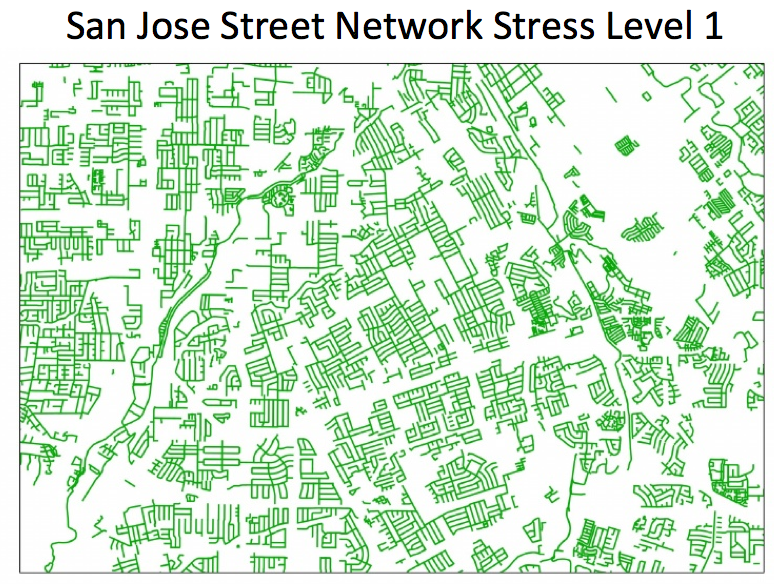Last month the Delaware Valley Regional Planning Commission approved its 2017 Work Program which included Bike Level of Traffic Stress Analysis for Bucks, Chester, Delaware and Montgomery Counties. This project idea grew out of the conversation from the Bicycle Facilities on PA Suburban Roads Working Group an ongoing effort with PennDOT and County Planning Departments to develop a process to prioritize state roads that are suitable for bicycle facilities.
In 2011 the Mineta Transportation Institute released the report “Low-Stress Bicycling and Network Connectivity.” It examined the practicality of a bicycling network being defined as “a set of streets and paths that people consider acceptably safe for bicycling”. These streets already exist and in urbanized areas actually comprise the majority of streets. The problems lies in the lack of connectivity of these mostly local streets.
The resulting model is called Level of Traffic Stress (LTS) and it categorizes all streets, and intersections into four levels of bicyclist comfort:
LTS 1: Suitable for children
LTS 2: Acceptable to traffic intolerant adult (interested but concerned)
LTS 3: OK for experienced bicyclists (enthused and confident).
LTS 4: Highest Stress (strong and fearless)

2/3 of the streets in San Jose, CA are rated low stress Level 1, but they are interrupted by higher stress streets, making bike travel unappealing for most people.
Stress Mapping is a different way of developing a bicycle plan, identifying the islands of low stress streets, and trails. This allows transportation planners to focus on bridging the gaps along or across the high stress streets. A quarter-mile protected bike lane may be more valuable asset than 10 miles of standard bike lanes.
This approach of knitting together the local street and trail network is particularly important for our Pennsylvania suburbs. The majority of the connecting roads are maintained by PennDOT, often lacking shoulders and carry varying levels of traffic. Even when PennDOT finally waives the Bicycle Occupancy Permit many state roads are simply not wide enough for minimal bike lanes.
The DVRPC will be starting this project later this year along with a similar bike mapping project that will cover Mercer County, NJ that will also include level of traffic stress analysis.
